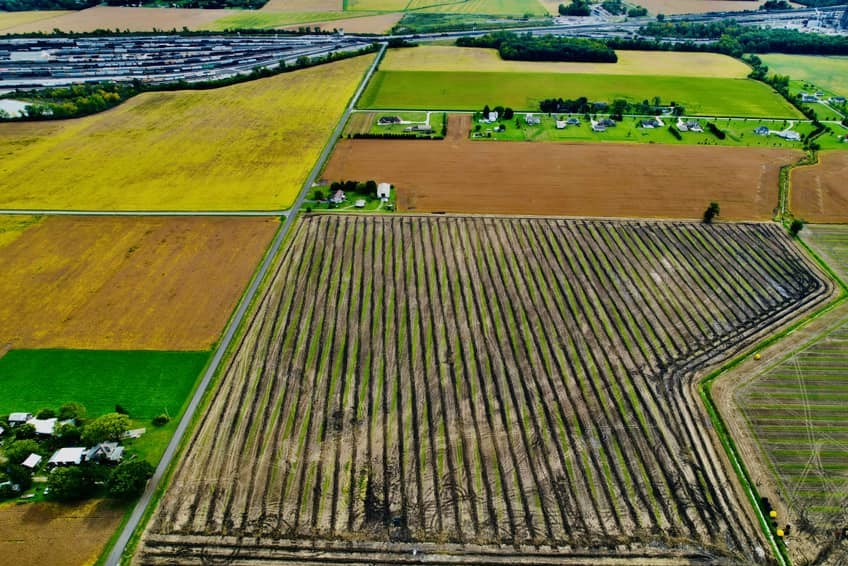Water
March 4, 2025 / 4 minute read
What to Know about Agricultural Drainage, Flooding and Water Quality

Photo credit: Taylor Abraham
Everyone remembers the lesson from the children’s fable “The Tortoise and the Hare”: slow and steady wins the race. The tortoise’s consistent pace turned out to be wiser than the hare’s break-neck speed that suddenly ended with a nap.
Aesop probably wasn’t envisioning drainage tile when he produced that tale about 2,600 years ago. But there could hardly be a better story to set up the benefit of controlled flow rates from agriculture field drainage.
“One of the biggest things about tiling is you have a consistent flow, which is better than having a lot of flow all at once and then no flow at all,” says Taylor Abraham, owner of Abraham Drainage & Excavating in northeast Ohio. “We want an outlet that’s always flowing. If you have flow throughout the year, you’re going to have a cleaner waterway.”
It Does What?
Myths abound when it comes to subsurface drainage. Some communities see pipe being installed and fear it will bring flooding. Others raise concerns about the water quality coming from the tile lines. In truth, drained fields reduce flooding risks, and the water quality is far better than surface runoff.
Tile does not change the amount or the direction of the waterflow downstream. Conversely, a field without tile in a saturated state will force all the excess water to run downstream at once — taking nutrients from the surface with it.
Calculated flow rates are key to the success story of drainage.
Flow Control
To the unfamiliar, the assumption can be that drainage tile is flowing openly, like street gutters during a heavy rain. But subsurface drainage is calculated to a specific drainage coefficient. The most common of those is 3/8 inch per 24 hours. That means per acre, only 3/8 inch of rain will flow from the drainage tile and eventually to its outlet.
Such consistency by the tile lines keeps the soil column in a balanced state and capable of absorbing more water during rain events. Likewise, plants make better use of available nutrients in these conditions.
Abraham likes to use the analogy of a sponge. If a sponge is soaked, any additional water poured onto it will immediately run off the surface. The ground is like a sponge, and in high water table conditions, rain will rush off the surface and take additional sediment with it. But installing tile is like wringing out a sponge. A dry sponge — like drained ground — will absorb water.
“That creates a lot slower discharge, which really keeps the sediment down,” he says. “During a high rain event, the soil can absorb more of that surface moisture and then it can dissipate it slowly through the tile system.”
Natural Filter
Importantly, ground that is not saturated acts as a filter. Rain passes through layers of clay and sand before reaching the pipe, filtering nutrients along the way. Not only does that benefit the watershed, but it also spares the farmer’s inputs from being lost to runoff.
“Fields that aren’t drained are losing more of the topsoil and the nutrients required for crop production,” says Rebecca Scott, ADS territory sales manager for southern Indiana and southern Illinois. “With drainage, the nutrients remain in the soil rather than running off into our creeks and streams.”
A Good Story
Subsurface drainage is calculated for consistency, which reduces the likelihood of flooding and surface runoff. A lower water table enables the ground to act as a filter, so nutrients stay in the soil, and it limits topsoil erosion through absorption.
Steadiness is a winning strategy, the classic story taught. That has echoes beyond the tale. The best outcome for water management solutions comes through the calculated and consistent flow created through subsurface drainage.
